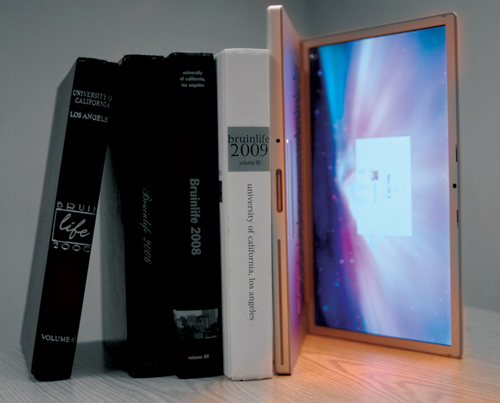CORRECTION: Arvli Ward is the director of UCLA Student Media.
Slumping nationwide sales for college yearbooks have forced many universities to seek alternative paths for publishing their content.
In an attempt to allow students more control over how a specific spread looks, BruinLife began looking for a new model that would allow students to customize their yearbooks online.
BruinLife has been in talks about switching to a new publishing company, Panraven, which, if implemented, would allow for the yearbook to be customized online by buyers who can then order the final product.
The model is similar to one that Boston University just launched. Those who purchase a yearbook can drag and drop photos from their online photo accounts and place them on a layout, which students can then order and have printed.
However, BruinLife’s plans with Panraven came to a halt on Friday afternoon after the company announced it would push the plan till the 2011-2012 school year for unspecified reasons, said Arvli Ward, director of UCLA Student Media.
The current and incoming staff members remain uncertain as to what will happen. While the yearbook will remain with its current publishing company, talks with Panraven are still ongoing and a change in the following year is still possible, Ward said.
The proposed changes to BruinLife would allow for an estimated 20 percent of the yearbook to be customized by students. Depending on what does happen, students might also be able to customize the entire yearbook, and they would be able to decide when individual books are printed, said Jose Hernandez, the incoming editor-in-chief of BruinLife for the 2010-2011 school year.
UCLA’s BruinLife yearbook, which first began printing in 1919, remains one of the university’s oldest continuing publications. While it has also seen dwindling sales over the past few years, it continues to be financially sound, Ward said.
For some publications, yearbook sales at schools such as Purdue University and the University of Virginia have dwindled so low that they have ceased to print altogether. After this year, University of Georgia’s 125-year-old yearbook, Pandora, will no longer be offered in its traditional print format.
With such a large student population, it is difficult to capture every student’s experience, and students are less likely to buy a yearbook if they know they are not going to be in it, said Amy Emmert, the student media adviser to BruinLife.
“I think students would pay a reasonable price if they knew they were going to be in it.” Emmert said. “I think the problem is capturing personal experiences.”
Including every student in the yearbook may have always been a problem, Ward said, but he speculated that over the years, student attitudes have changed on campus, and having a yearbook they may not be in is not as important. The specific reasoning as to why college yearbook sales have been declining remains unclear.
It may be that with the rising cost of college for students, parents who usually purchase yearbooks as an end-of-the-year gift are seeing it as simply another unnecessary cost, said Alan Terranova, marketing and business manager for BruinLife.
Although UCLA’s yearbook is not in the same straits as other college yearbooks, Ward said it is not certain if UCLA can escape that fate. With the current publishing company, editors have been limited to a certain number of predetermined pages every year, allowing only for the largest recurring events such as Dance Marathon to be included in the spreads, Hernandez said.
As a result, yearbooks tend to focus on large, annual cultural events, leaving little room for the book to cover smaller or new events. Hernandez added that the editors attempt to leave a few blank spreads for miscellaneous events, but it is still hard to cover the campus’s vast number of happenings.
Ameet Chahall, the current managing editor of BruinLife, said the proposed customizable aspects of the yearbook would help reflect the diversity of UCLA’s many organizations and annual happenings.
In allowing buyers to customize their contents online, sales could potentially increase and production costs would be reduced since the books would only be printed after they are ordered, Ward said.
Regardless of the proposed changes, Chahall said she is confident that students who purchase a yearbook will still be able to expect the same level of quality they have in the past.
“(The BruinLife yearbook staff members) are all dedicated and committed to what we do. Even though this is a change, we will still put out a good, quality product.”
The majority of the final decisions regarding staff numbers and plans for the year will be made over the summer, when the incoming editors decide on what proposals remain on the floor, Chahall added.
Chahall said that often, students see a yearbook as a “token of the high school years,” but students should remember that the yearbook is still a sort of time capsule of a certain part of a student’s life, much like it was in high school.
“The college years are just as important,” Chahall said. “Even if it is only a 500-page book, … you can see the history of the campus and Westwood.”
